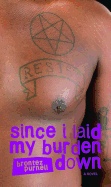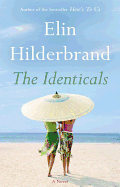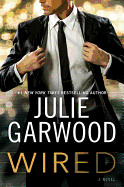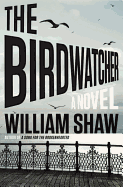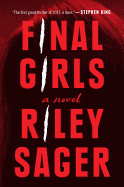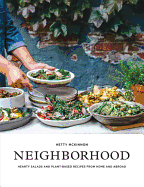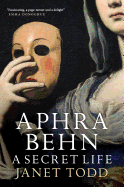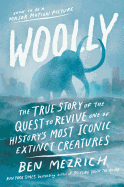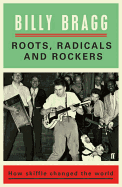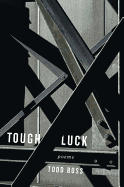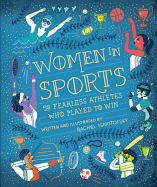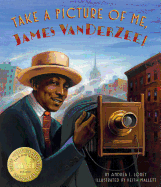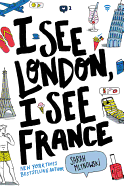Extreme Browsing
After reading an article about the delights of bookstore browsing (something I rarely do--I usually have a specific book in mind), I decided to divide an unexpected largesse among three indie stores, and so I wandered the aisles to explore outside my usual genres. My rules were: 1) no mystery or fiction, and 2) only paperbacks. Here are a few I bought.
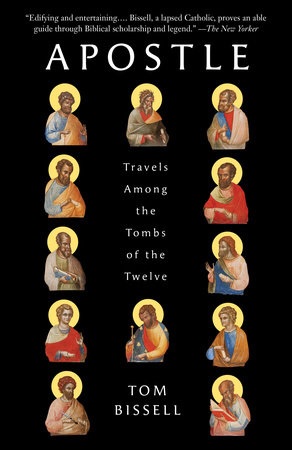 Headed for travel, I got sidetracked (as should happen when browsing) by a travel-ish book: Apostle: Travels Among the Tombs of the Twelve by Tom Bissell. The first sentence I read hooked me: "Early one morning, I walked along the calm, torpid Tiber River, the sky above streaked with watermelon light." I immediately wanted to be with the author, searching for saints (and a cappuccino).
Headed for travel, I got sidetracked (as should happen when browsing) by a travel-ish book: Apostle: Travels Among the Tombs of the Twelve by Tom Bissell. The first sentence I read hooked me: "Early one morning, I walked along the calm, torpid Tiber River, the sky above streaked with watermelon light." I immediately wanted to be with the author, searching for saints (and a cappuccino).
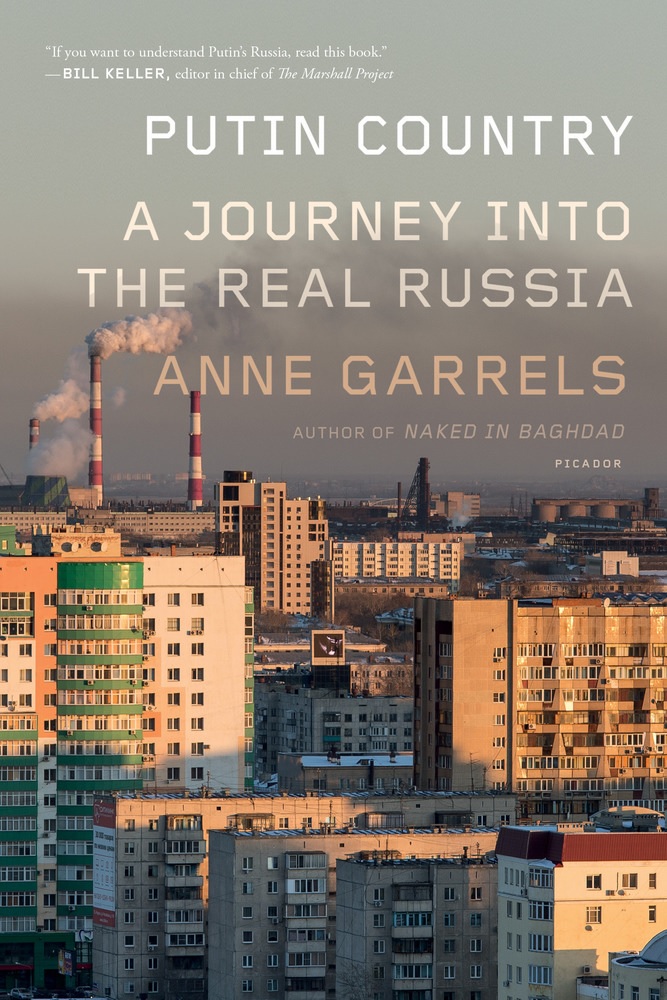 I turned around and browsed the real travel section, and selected The Places in Between by Rory Stewart, serendipitously blurbed by Tom Bissell: "A striding, glorious book." In January 2002, Stewart walked across Afghanistan. That's intriguing enough, but during the journey, he was joined by a retired fighting mastiff, Babur. Next, I picked up Anne Garrels's Putin Country: A Journey into the Real Russia. For an NPR junkie, Garrels is catnip, so that was a natural.
I turned around and browsed the real travel section, and selected The Places in Between by Rory Stewart, serendipitously blurbed by Tom Bissell: "A striding, glorious book." In January 2002, Stewart walked across Afghanistan. That's intriguing enough, but during the journey, he was joined by a retired fighting mastiff, Babur. Next, I picked up Anne Garrels's Putin Country: A Journey into the Real Russia. For an NPR junkie, Garrels is catnip, so that was a natural.
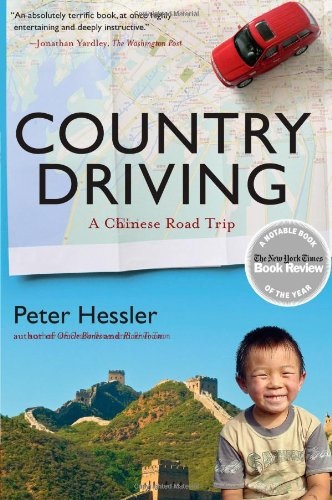 A few years ago, I read River Town: Two Years on the Yangtze by Peter Hessler (while I was actually on the Yangtze). I became a Hessler fan, so I picked up Country Driving: A Chinese Road Trip and read, "There are still empty roads in China, especially on the western steppes, where the highways to the Himalayas carry little traffic other than dust and wind.... It was the thought of all that fleeting open space... landscapes on the verge of change--that finally inspired me to get a Chinese driver's license." I'm in. --Marilyn Dahl
A few years ago, I read River Town: Two Years on the Yangtze by Peter Hessler (while I was actually on the Yangtze). I became a Hessler fan, so I picked up Country Driving: A Chinese Road Trip and read, "There are still empty roads in China, especially on the western steppes, where the highways to the Himalayas carry little traffic other than dust and wind.... It was the thought of all that fleeting open space... landscapes on the verge of change--that finally inspired me to get a Chinese driver's license." I'm in. --Marilyn Dahl
A Mammoth of a Story
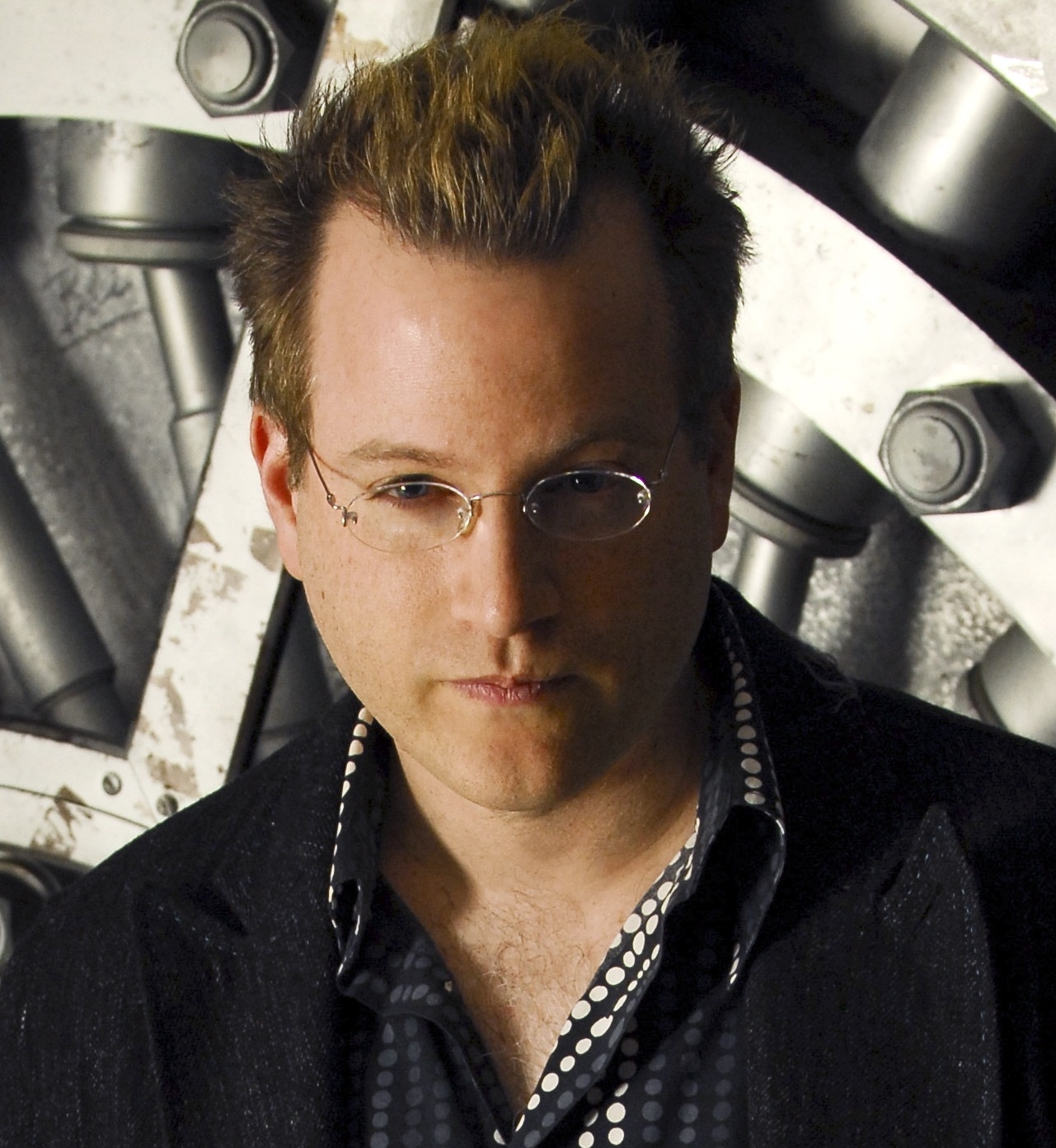 |
| photo: Eric Levin |
Who doesn't love the idea that past mistakes of the human race could possibly be undone by scientific ingenuity? The very thought that one could, with dedicated work, bring an alternate view of the future from improbable to reality is what drives many people toward the sciences. Ben Mezrich's Woolly: The True Story of the Quest to Revive One of History's Most Iconic Extinct Creatures (out now from Atria; reviewed below) is, in part, an account of the scientific community's quest to return the Woolly Mammoth to Northern climates; it's also about the impulses driving those who are trying to achieve what was once considered impossible.
Tell us about the process of putting together this book. What kinds of research were involved?
I've been fascinated by Woolly Mammoths ever since I was a kid; at the same time, my entire goal in life as a writer was to be Michael Crichton. When I first heard about George Church and his Woolly Mammoth Revival project, I became obsessed with the idea of writing it. I reached out to him and he invited me into his lab. I embedded myself there, and got to know his post-docs as well as I could. I was like a fly on the wall, watching this crazy science. As with all of my books, my goal is to tell a true story in a thrilleresque fashion. I want to write it as if it already was a movie, which is how I see it in my head. So I spent months researching, talking to everyone I could, trying to understand the science--and then I tried to make it feel, through the writing, as exciting as it does inside my head.
Aside from Michael Crichton's, what books really stuck with you, both in terms of shaping your writing and fueling your love of reading?
As a kid my dad had a rule: my brothers and I had to read two books a week before we were allowed to watch television. So every week we would pick books--anything counted--and he would test us on them. I usually went for science fiction--I fell in love with Asimov, Heinlein, Bradbury. Then as I got older, I moved into Crichton, and then Hemingway. As an adult I read and read The Sun Also Rises the first week of every month. Pretty crazy, but I think it taught me a lot about how to paint a picture with a small amount of words. Then I discovered Hunter S. Thompson and he blew my mind. I really wanted to be a blend of Crichton and Thompson. Telling true stories in a thriller fashion, using real facts to construct something compelling.
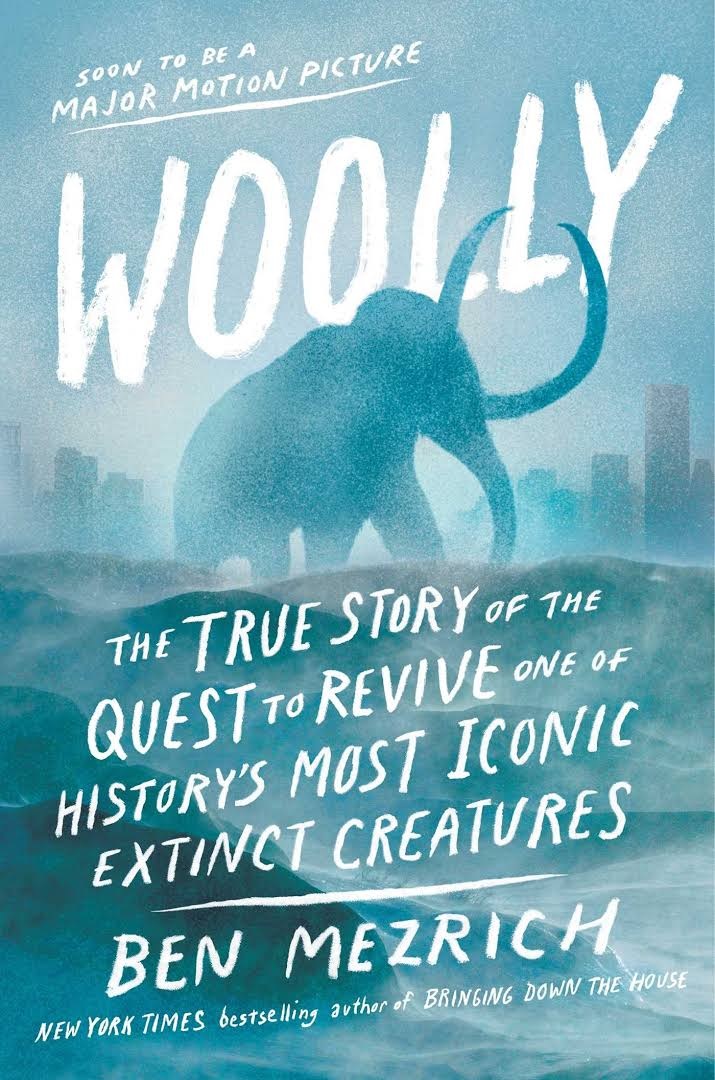 The stories of the people involved in this project--their similarities and differences--are explored in Woolly, and you bring it all together in a way that gives the project a sort of epic scale. Did you get a sense that they feel part of an epic story?
The stories of the people involved in this project--their similarities and differences--are explored in Woolly, and you bring it all together in a way that gives the project a sort of epic scale. Did you get a sense that they feel part of an epic story?
Absolutely, epic is the right word. These young scientists who work in Church's lab are truly creating our future. They are bringing back an extinct species using cutting-edge genetic engineering. Because of them, Woolly Mammoths are actually going to walk the earth after being extinct for 3,000 years. That's insane, and huge. And these kids, essentially, aren't doing it for money or fame--they are just doing it because it's a scientific problem they are solving. And then there's George Church himself. I idolize him. He's this incredible, brilliant person--the Einstein of our times--who is pushing us toward a future that he, internally, has already envisioned. I do think everyone who has really thought about the Woolly Mammoth revival feels it's something epic, immense. My favorite quote from the book is what one of the scientists told me: "It's only science fiction until we remove the fiction, then it becomes real...."
How does their work fit into the larger quilt of scientific research? Do you see implications of their work for other fields of study?
That's really the core of the story. The Woolly Mammoth project is a moon shot. It's going to lead us in so many incredible directions. These same tools are employed in reverse aging. The next generation is going to live 150 years because of CRISPR and the mechanisms involved in building a Mammoth. The cure for cancer is going to come from the fact that elephants don't get cancer, because of something written in their genes. Mosquitos that can't carry malaria, the elimination of Lyme disease, biofuels from bacteria, all of this comes out of these advances in synthetic biology. I don't think I can overstate it--the same tech involved in bringing back the mammoth is going to change all of our lives. --Matthew Tiffany, LCPC, writer for Condalmo and psychotherapist
How to Read More Books
Bustle suggested "10 ways to read more books this year, even if you're super busy."
---
"More on medieval chained libraries, as seen in Game of Thrones" and explored by Signature.
---
Author Catherine Lacey shared her picks for the "top 10 opening scenes in books" with the Guardian.
---
"Literary misquotations quiz: can you get the wrong lines right?" the Guardian challenged.
---
Brain Pickings displayed "the best illustrations from 150 years of Alice in Wonderland."
---
"He typed out famous novels to learn the art of writing." Mental Floss offered "8 gonzo facts about Hunter S. Thompson."
Rediscover: Jane Austen
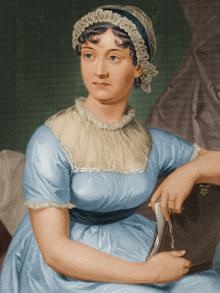 July 18 marked the 200th anniversary of English novelist Jane Austen's death. Austen (1775-1817) succumbed to an unknown illness at age 41, leaving four major novels published during her lifetime: Sense and Sensibility (1811), Pride and Prejudice (1813), Mansfield Park (1814) and Emma (1815). Northanger Abbey and Persuasion were published posthumously, and the incomplete manuscript eventually titled Sanditon wasn't released until 1925. Austen's tragically truncated body of work show a transition from 18th-century sentimental novels (as parodied in Sense and Sensibility) to 19th-century literature. Though Austen achieved some contemporary success, the authorship of her novels was kept hidden. However, her modern popularity places her in the pantheon of literary greats. One of many indications of this: On July 18, the Bank of England unveiled a new £10 note bearing Austen's portrait, making her only the second woman, after Queen Elizabeth II, to appear on currency in England and Wales.
July 18 marked the 200th anniversary of English novelist Jane Austen's death. Austen (1775-1817) succumbed to an unknown illness at age 41, leaving four major novels published during her lifetime: Sense and Sensibility (1811), Pride and Prejudice (1813), Mansfield Park (1814) and Emma (1815). Northanger Abbey and Persuasion were published posthumously, and the incomplete manuscript eventually titled Sanditon wasn't released until 1925. Austen's tragically truncated body of work show a transition from 18th-century sentimental novels (as parodied in Sense and Sensibility) to 19th-century literature. Though Austen achieved some contemporary success, the authorship of her novels was kept hidden. However, her modern popularity places her in the pantheon of literary greats. One of many indications of this: On July 18, the Bank of England unveiled a new £10 note bearing Austen's portrait, making her only the second woman, after Queen Elizabeth II, to appear on currency in England and Wales.
Austen's work is a continual source of scholarship, adaptations and plain good reading. Her sharp wit, biting irony and keen eye for social drama have kept readers coming back for two centuries. Pride and Prejudice, that Regency romcom as insightful as it is entertaining, has sold more than 20 million copies. Austen has more than earned her place in the Western canon and is always worth another read. --Tobias Mutter
Book Review
Fiction
Since I Laid My Burden Down
by Brontez Purnell
Reconciliation doesn't come easy, and for DeShawn it's damn near impossible. So many of the men who touched him throughout his life have passed on. In Brontez Purnell's brazen debut novel, a tired Alabama man, freewheeling in the punk underground of San Francisco, returns home when his uncle dies. There his ghosts come back to haunt him with the heady energy they had when still alive.
Since I Laid My Burden Down entwines past and present as DeShawn is repeatedly called upon to clean up the messes left by the deceased. Arnold was a gritty musician and lover who committed suicide. Jatius was an older childhood friend who did, too. Time and again DeShawn has tangled with white men and black men, men with troubled upbringings and those who paid him attention at just the right moment. The disparities of these rendezvous, though, have come into high relief with age--wisdom he's earned fair and square.
Immensely quotable and supremely enjoyable, Purnell's incendiary sense of humor flips the script on what might otherwise be a somber subject. DeShawn tells his mother that when he dies, he wants to be cremated. "Where do you want your ashes thrown?" she asks. "IN THE EYES OF MY ENEMIES!" he responds.
Since I Laid My Burden Down is a remarkable work of fiction, an invaluable addition to queer literature. Though wounded--and reckless at times--DeShawn remains tenacious, proving that strength lies in how one chooses to live, as well as why one chooses to stay alive. --Dave Wheeler, associate editor, Shelf Awareness
Discover: In Brontez Purnell's outstanding and wicked first novel, returning home to Alabama forces DeShawn to come to grips with the dead men who have shaped him.
Amethyst Editions/Feminist Press,
$17.95,
paperback, 208p., 9781558614314
The Identicals
by Elin Hilderbrand
Tabitha and Harper Frost were as close as identical twins could be, until their parents divorced when they were 17. Tabitha moved to Nantucket with their mother, famed fashion designer Eleanor Roxie-Frost (ERF); Harper and their father, Billy, moved to Martha's Vineyard. The twins stayed in touch for a few years, but in their mid-20s tragedy struck, and now they haven't spoken in 14 years.
But then, in a matter of days, Billy dies and Eleanor falls, breaking her hip. The sisters are overwhelmed by their lives. Tabitha's teenage daughter, Ainsley, is out of control, and the ERF boutique she manages is losing money. Meanwhile, Harper's reputation on Martha's Vineyard is in flames after her lover's wife catches them together, and spreads the news via the island's gossip mill.
In a desperate attempt to salvage what's left of their lives, Harper and Tabitha trade places, with Harper heading to Nantucket to run the ERF store and keep tabs on Ainsley, while Tabitha heads to Martha's Vineyard to sort out Billy's house and possessions.
Funny, frank and romantic, The Identicals is Elin Hilderbrand (Winter Storms) at her best. Tabitha's uptight resentment and Harper's free-spirited flailing are both products of their childhood. Hilderbrand deftly explores their stories and failings while keeping the plot entertaining and quickly paced. Readers are sure to love both sisters--laughing along with their misadventures--and may want to research island summer vacations after reading The Identicals. --Jessica Howard, bookseller at Bookmans
Discover: Twin sisters Tabitha and Harper switch island homes, from Nantucket to Martha's Vineyard, for one memorable summer.
Little, Brown,
$28,
hardcover, 432p., 9780316375191
Wired
by Julie Garwood
Julie Garwood (Fast Track) took a three-year break from writing for health reasons, so her fans are sure to be thrilled by the release of Wired. The 13th novel in Garwood's FBI series (but easily read as a standalone), the fast-paced Wired features Allison Trent, a college student and gifted hacker who models on the side to pay for school. Allison has also been supporting her wastrel cousin and the greedy requests of her aunt and uncle; she feels that she owes them since they took her in after the death of her parents.
But then FBI Agent Liam Scott hears Allison talking in a college seminar and gives her the opportunity of a lifetime: work as a freelance hacker for the FBI and help him find a mole who is leaking sensitive Bureau info to the press.
Trying to balance the demands of her avaricious family, her college schedule, the high volume of work the FBI has for her, and her growing attraction to Liam keeps Allison on her toes. Then, when threats start being made against Allison, she is happy to have Liam at her side, protecting her. But can she learn to stand up for herself?
Full of entertaining characters, Wired is a funny, romantic suspense novel that will keep readers up too late, eager to find out what happens next. --Jessica Howard, bookseller at Bookmans
Discover: A talented hacker starts working with the FBI to track down a mole, and soon begins to fall for the agent in charge of her protection.
Berkley,
$27,
hardcover, 320p., 9780525954460
Mystery & Thriller
The Birdwatcher
by William Shaw
William South is an ordinary copper. A birdwatcher in his free time, he's patient and meticulous, keen to police everyday troubles folks find themselves in. With death in his past, what South wants most is to avoid the murder squad at all costs. When former London Detective Sergeant Alexandra Cupidi joins the Kent Police and draws a bludgeoning for her first case, South's boss puts him on her team to help with the "local impact" of the crime. The victim is South's neighbor and fellow birdwatcher Bob Raynor.
South initially fights the assignment, but can't help but be intrigued by both Cupidi and revelations about his dead friend. How much didn't he know about seemingly harmless Bob? Did Cupidi really leave London because of her troubled teen daughter? When more bodies start turning up, South is blindsided by a connection between the case and his childhood. And as he's preparing to go all-in, Cupidi mysteriously starts shutting him out.
William Shaw's The Birdwatcher is a gem of an addition to the stellar Mulholland line of crime fiction. Shaw's writing is true British procedural; lean and spectacle-free, it nevertheless grabs and doesn't let go. With minimal telling, Shaw paints full characters and relationships with seemingly preternatural ease. Particularly satisfying are South's relationship with Cupidi's daughter Zoe and emotional flashbacks to his childhood in Ireland during the Troubles. A well-plotted mystery with love and loyalty at its core, The Birdwatcher is a gratifying standalone that both satisfies and cries for more. --Lauren O'Brien of Malcolm Avenue Review
Discover: A policeman forced to assist a new co-worker with the investigation of a brutal murder discovers personal connections to his own violent past.
Mulholland Books,
$26,
hardcover, 336p., 9780316316248
Final Girls
by Riley Sager
Riley Sager uses the slasher movie trope of the "final girl" (the lone female who manages to survive and escape the killer) as the foundation for a nail-biting thriller.
Quincy Carpenter. Samantha Boyd. Lisa Milner. Even though the three women have never met in person, their names are inextricably linked as the Final Girls, lone female survivors of mass murders so gruesome they rival big-screen slasher flicks. Years after surviving a bloody massacre, Quincy runs a successful baking blog and enjoys a stable relationship with her compassionate boyfriend, Jeff. But when Lisa Milner dies under suspicious circumstances and Sam Boyd turns up on her doorstep, Quincy can no longer hide from her past.
Part thriller, part horror story, Final Girls borrows riffs from Friday the 13th, Halloween and Single White Female, but remains its own sophisticated creature. Although the story's inspiration is pure camp, Sager takes on the heavy theme of trauma survival thoroughly and with due seriousness. While a final girl's tale in a movie usually ends with survival as success, Quincy, Lisa and Sam have to live with and fight their demons. Quincy's coping mechanisms include pill popping and shoplifting; her veneer of normalcy hides darker currents of anger and guilt, which Sager uses to propel the plot and wind tension to the breaking point. Taut and bloody, this chilling mystery invites Gillian Flynn comparisons. Readers should prepare to sleep with the lights on. --Jaclyn Fulwood, blogger at Infinite Reads
Discover: When horror movie-style slasher sprees really happen, a survivor must face her past when other "final girls" are in danger.
Dutton,
$26,
hardcover, 352p., 9781101985366
Food & Wine
Neighborhood: Hearty Salads and Plant-Based Recipes from Home and Abroad
by Hetty McKinnon, photography by Luisa Brimble
Globetrotting epicure Hetty McKinnon (Community) offers recipes inspired by her travels and her Brooklyn, N.Y., delivery service in Neighborhood: Hearty Salads and Plant-Based Recipes from Home and Abroad.
She begins with advice: always keep two types of soft herbs in the fridge. Stock the pantry with canned legumes. Leftover salad? Put an egg on it. Blend it into soup. Jazz up a grilled cheese. Make an Iranian frittata.
McKinnon then groups recipes by the regions that inspired them. In "Dear America," she honors the American South with a salad of shredded collard greens, baked sweet potato, pinto beans and paprika buttermilk dressing. In "So Frenchie," a highlight is cumin-spiced cauliflower with fried lentils and spinach yogurt. "This Is Australia" includes a green and gold medley of asparagus and golden beets with faro, crispy sage and lemony brown butter. "To Asia, with Love" provides show-stopping brussels sprouts with stir-fried lotus root, black fungus, five-spice tofu and hoisin-sesame sauce.
Each dish is vegetarian, many also gluten-free and vegan, and McKinnon offers substitution suggestions for hard-to-find produce--e.g., black fungus can be replaced with shitake mushrooms. And in the spirit of community, McKinnon calls on chefs from three continents to contribute desserts based on fresh fruits.
Neighborhood is one of those rare cookbooks with even more photos than recipes. The lush colors and textures shine while McKinnon spotlights flavors of neighborhoods the world over, with simple instructions and dishes bound to please. --Katie Weed, freelance writer and reviewer
Discover: Globetrotter Hetty McKinnon creates delectable and vibrant salads with fresh, international flavors.
Roost Books,
$24.95,
paperback, 240p., 9781611804553
Biography & Memoir
Aphra Behn: A Secret Life
by Janet Todd
Aphra Behn was a 17th-century playwright, poet, translator, propagandist and spy, and one of the first English women to successfully support herself as a professional writer. She was an iconoclast who expressed many radical political, religious and sexual ideas through her work. Aphra Behn: A Secret Life is a revised and updated reissue of the 1996 biography by Janet Todd (A Man of Genius), the British scholar, biographer and novelist.
Behn is a tricky subject for any biographer. Very little was written about her by anyone who knew her. As a professional artist, she intentionally invented and hid behind her public image. Todd calls her "a lethal combination of obscurity, secrecy and staginess... not so much a woman to be unmasked as an unending combination of masks and intrigue." In addition, despite her many radical convictions, she was a strongly anti-democratic Royalist, and her ideas did not line up neatly with modern definitions of social liberalism or feminism. However, Todd thoroughly understands the particular cultural and political environment of the Restoration. She traces a convincing and entertaining path through the likely events of Behn's life in the vivid context of her times, examining the evidence and alternatives for every possibility and providing close readings of her works. Her approach creates an effective mixture of historical research, literary criticism and fiction that brings us as close as we may ever get to the truth of this enterprising and enigmatic literary figure. --Sara Catterall
Discover: This entertaining and thorough biography of a great 17th-century English playwright mingles scholarly research with novelistic speculation.
Fentum Press,
$18.95,
paperback, 608p., 9781909572065
Science
Woolly: The True Story of the Quest to Revive One of History's Most Iconic Extinct Creatures
by Ben Mezrich
Any major scientific initiative is driven by two factors: the practical application to everyday human life that success of the endeavor would enable, and the "because we want to see if we can" factor. There's a lot to be said for the energizing effect of any "one giant leap for mankind" that we achieve--innovation powers more inventing, more research, more searching for answers. The stories behind these leaps forward are integral to inspiring more people to become curious about the world around them, and Ben Mezrich's Woolly: The True Story of the Quest to Revive One of History's Most Iconic Extinct Creatures provides both scientific advance and engaging storytelling. As it turns out, there's more at stake with these efforts than simply testing the limits of human ingenuity.
Sergey Zimov is a Russian scientist studying permafrost, which currently--currently being the operative word--covers nearly a quarter of the surface of Earth. It's melting, and if that continues, the amount of methane gas and carbon dioxide released would be devastating to our atmosphere and to life across the globe. When the Woolly Mammoth last walked the Earth, there was significantly less permafrost, and so the thinking goes that if our planet is returning to that environment, we need to restore the other missing pieces of that ecosystem to balance it out. Dr. George Church, considered to be one of the finest minds working in genetics research, is leading a team of scientists in designing, or engineering, a Woolly Mammoth gene sequence to be merged into the genetic code of a type of Asian elephant. Mezrich deftly moves his story back and forth in time, capturing the last days of a majestic animal, the early days of the scientists working to crack the code, and the current efforts safely to increase the pace of progress before the damage to the Earth is irrevocable. --Matthew Tiffany, LCPC, writer for Condalmo and psychotherapist
Discover: The stories of the people and the science behind efforts to bring an extinct species back to life.
Atria,
$26,
hardcover, 304p., 9781501135552
Roots, Radicals, and Rockers: How Skiffle Changed the World
by Billy Bragg
Singer-songwriter Billy Bragg has always been a firebrand, using his music and public persona to push for progressive causes. It's no surprise, then, that he'd be fascinated by the intertwining of politics and pop culture in his homeland of Britain. Roots, Radicals, and Rockers: How Skiffle Changed the World is a look at how one short-lived musical craze based on American blues, jazz and folk ended up leading to the British Invasion and modern rock 'n' roll.
Bragg traces the history of skiffle, "a uniquely British take on American folk and blues," from its beginnings in England's inchoate jazz scene to its direct influence on the founding of the Rolling Stones, the Beatles and other important British rock bands. Unlike most popular music of the time, skiffle was a grassroots movement, where young working-class teenagers and folk agitators sang songs with reckless abandon (to the dismay of some of the jazz players who gave the genre its start). Bragg's writing is perfectly matched for his subject matter: funny, informative without being laborious, and always willing to knock someone down a peg if he feels it's necessary. Anyone with an interest in the history of pop music will heartily enjoy this book, and most likely learn about singers and musicians that they'd never heard of who changed the course of music. And while politics do appear now and again (Bragg did once rewrite lyrics to "The Internationale"), Bragg isn't interested in making a political argument here. Instead, he's content to show how leftist activism is intertwined with the origins of rock. --Noah Cruickshank, adult engagement manager, the Field Museum, Chicago, Ill.
Discover: British singer and activist Billy Bragg tells the story of the roots of modern pop music from the genre known as skiffle.
Faber & Faber,
$29.95,
hardcover, 464p., 9780571327744
Poetry
Tough Luck
by Todd Boss
The work of Minneapolis poet, librettist and film producer Todd Boss (Yellowrocket; Pitch) frequently leans on his years growing up on a Wisconsin dairy farm. The title, from the poem "When My Mother Says Tough Luck," gives away the work-hard-and-take-your-lumps farm ethic echoed in similar titles like "When My Father Says Toughen Up" and "When We Say Knuckle Down." The latter puts an exclamation point on it: "we mean the knuckles/ of our wills... the whole body,/ the whole mind, the whole/ damned soul is a goddamned hand."
Boss's daily commute narrowly avoided the 2007 devastating collapse of the Twin Cities I-35W Bridge over the Mississippi. That fortunate escape from tragedy led to the long 35-section poem "Fragments for the 35W Bridge" that sits at the heart of Tough Luck. Although almost exclusively written in single word lines, this centerpiece poem nonetheless illustrates Boss's reliance on rhythm and rhyme to tell a story (such as this view of the detritus below the broken bridge: "half-sunk wrecks and suck-pocked rocks"). But more than a story, "Fragments" is a meditation on the risks of everyday life and the way that time inexorably eats away at even the seemingly indomitable: "A worn gusset plate. A few cruddy bolts. A single lousy joint. What a healthy terrorist Time is." Boss's poems sing with authenticity and permanence. As he notes, partly tongue-in-cheek, in "Fragments": "no badly aging load-bearing metaphor of mine ever imploded during rush hour and killed anyone." --Bruce Jacobs, founding partner, Watermark Books & Cafe, Wichita, Kan.
Discover: Minneapolis poet Todd Boss captures both the personal and eternal in poems celebrating the family farm and meditating on the 2007 Twin Cities bridge disaster.
W.W. Norton,
$26.95,
hardcover, 112p., 9780393608625
Children's & Young Adult
Women in Sports: 50 Fearless Athletes Who Played to Win
by Rachel Ignotofsky
Featuring stylized pictures and fact-filled biographical sketches of women athletes from around the world, this jam-packed compendium includes skaters, gymnasts, track and field stars, tennis players, golfers, skydivers, martial artists, mountaineers and many others.
Beginning with figure skater Madge Syers (born 1881) and finishing with gymnast Simone Biles (born 1997), graphic designer Rachel Ignotofsky (Women in Science) has created another great browsing book, attractively formatted on deeply colored glossy pages. Middle-graders, as well as teens and adults, may choose individual women to read about, poring over the amusing portraits (studded with fun facts) opposite the one-page profiles, all illustrated with captioned vignettes that capture the essence of the athlete's story. Other readers will read straight through, gaining insight into the discriminatory practices that prevailed until recently; the drive and ambition that fueled exceptional women to fight back; and the philanthropic and leadership roles in which female former athletes continue their careers.
Ignotofsky writes about women athletes of all types: there are profiles of para triathlete Melissa Stockwell, wounded during the Iraq War, and wheelchair racer Chantal Petitclerc, a Canadian paralyzed in an accident when she was 13. Ignotofsky also writes about the women of the 2016 Refugee Olympic Team who, without a country, competed in the Games for the first time. Well-known women like Kristi Yamaguchi, Serena Williams and Mia Hamm are represented alongside women who don't get the same recognition: Ellen MacArthur, an English woman who sailed around the world alone, and Anjali Bhagwhat, a shooter from India. An illustrated timeline, illustrations of muscle anatomy, comparisons of salaries and media coverage between male and female athletes, influential teams, short descriptions of additional women and sources round out this comprehensive volume that will excite and inspire. --Melinda Greenblatt, freelance book reviewer
Discover: Engaging text and remarkable portraits of women from many decades, countries and athletic fields add up to a 20th- and 21st-century history of women's advances in an important arena.
Ten Speed Press/Crown,
$16.99,
hardcover, 128p., ages 10-up, 9781607749783
Take a Picture of Me, James VanDerZee!
by Andrea J. Loney, illus. by Keith Mallett
James, the oldest son born to John and Susan Elizabeth VanDerZee, the butler and maid for President Ulysees S. Grant, was raised in Lenox, Mass., in an artistically inclined family. He "liked to paint, but drawing people was hard. He could never get their expressions right. James wanted to share the beauty he saw in his heart."
When a gentleman comes to his home and uses a "contraption called a camera" that perfectly captures "everyone's smiles and [his] mother's sweet gaze," James knows immediately how one makes great pictures: with a camera. He weeds his neighbor's garden for a quarter a day until finally he saves $5 and becomes the second person in Lenox to own a camera.
In time, James moves to New York, then New Jersey, then back to New York, where he opens his own portrait studio in Harlem amid the cultural celebration "called the Harlem Renaissance." Unlike other photographers of his time who mainly take pictures of poor, rural black people, James photographs famous people--Marcus Garvey, Joe Louis, the New York Black Yankees, Florence Mills, Mamie Smith--and focuses on showing the growing black middle class. Andrea J. Loney's (BunnyBear) text highlights VanDerZee's determination and imagination as it lays out his journey from young dreamer to success story to outdated craftsman to eventual historical hero. Keith Mallett's (How Jelly Roll Morton Invented Jazz) acrylic on canvas illustrations set tone beautifully with gentle spring and fall colors in Lenox, strong browns and reds in the darkrooms and brassy golds and blues in the Harlem of the 1920s and '30s. The vibrant illustrations paired with the lively text make Take a Picture of Me, James VanDerZee! a picture book biography that truly shares the beauty VanDerZee saw in his heart. --Siân Gaetano, children's and YA editor, Shelf Awareness
Discover: Take a Picture of Me, James VanDerZee is a picture book biography that shares the beauty in VanDerZee's life and work.
Lee & Low,
$19.95,
hardcover, 40p., ages 6-9, 9781620142608
I See London, I See France
by Sarah Mlynowski
After a stressful adolescence caring for her younger sister and agoraphobic mother, Sydney is ready to experience a classic rite of passage away from home: backpacking Europe with her best friend, Leela. She's got just enough money, a copy of Travel Europe and a plan--a plan that unravels when they board their flight and see Leela's ex, Matt, on their plane. Matt and his hot friend Jackson cause itinerary changes, at first by attraction, and then by post-breakup repulsion. As the girls skip to Amsterdam, Paris and beyond, both also skip between fearless adventuring and emotional meltdown, and Sydney finds it harder to keep Leela (plus her family at home) together in the way she always has.
Louise Rennison was an early travel inspiration for Sydney and Leela, and Sarah Mlynowski (Ten Things We Did (and Probably Shouldn't Have)) brings Rennison's delightfully madcap energy to her story's older characters. As a result, throughout breakups, panic attacks and other emergencies, the plot never loses its buoyancy or charm. The book may not work for some younger teens--for example, readers who can't already guess what a group of 19-year-olds might get up to in Amsterdam will receive a thorough education about its offerings. But Mlynowski's respect for the complex emotional experiences of late adolescence will make the book especially compelling for older teen and adult readers, reminiscent of the best of Paula Danziger, allowing I See London, I See France to be a poolside read for the ages. --Stephanie Anderson, assistant director for public services, Darien Library (Conn.)
Discover: This lovably screwball YA novel will have readers checking whether their passports are still valid.
HarperTeen,
$17.99,
hardcover, 384p., ages 14-up, 9780062397072
 Headed for travel, I got sidetracked (as should happen when browsing) by a travel-ish book: Apostle: Travels Among the Tombs of the Twelve by Tom Bissell. The first sentence I read hooked me: "Early one morning, I walked along the calm, torpid Tiber River, the sky above streaked with watermelon light." I immediately wanted to be with the author, searching for saints (and a cappuccino).
Headed for travel, I got sidetracked (as should happen when browsing) by a travel-ish book: Apostle: Travels Among the Tombs of the Twelve by Tom Bissell. The first sentence I read hooked me: "Early one morning, I walked along the calm, torpid Tiber River, the sky above streaked with watermelon light." I immediately wanted to be with the author, searching for saints (and a cappuccino).  I turned around and browsed the real travel section, and selected The Places in Between by Rory Stewart, serendipitously blurbed by Tom Bissell: "A striding, glorious book." In January 2002, Stewart walked across Afghanistan. That's intriguing enough, but during the journey, he was joined by a retired fighting mastiff, Babur. Next, I picked up Anne Garrels's Putin Country: A Journey into the Real Russia. For an NPR junkie, Garrels is catnip, so that was a natural.
I turned around and browsed the real travel section, and selected The Places in Between by Rory Stewart, serendipitously blurbed by Tom Bissell: "A striding, glorious book." In January 2002, Stewart walked across Afghanistan. That's intriguing enough, but during the journey, he was joined by a retired fighting mastiff, Babur. Next, I picked up Anne Garrels's Putin Country: A Journey into the Real Russia. For an NPR junkie, Garrels is catnip, so that was a natural.  A few years ago, I read River Town: Two Years on the Yangtze by Peter Hessler (while I was actually on the Yangtze). I became a Hessler fan, so I picked up Country Driving: A Chinese Road Trip and read, "There are still empty roads in China, especially on the western steppes, where the highways to the Himalayas carry little traffic other than dust and wind.... It was the thought of all that fleeting open space... landscapes on the verge of change--that finally inspired me to get a Chinese driver's license." I'm in. --Marilyn Dahl
A few years ago, I read River Town: Two Years on the Yangtze by Peter Hessler (while I was actually on the Yangtze). I became a Hessler fan, so I picked up Country Driving: A Chinese Road Trip and read, "There are still empty roads in China, especially on the western steppes, where the highways to the Himalayas carry little traffic other than dust and wind.... It was the thought of all that fleeting open space... landscapes on the verge of change--that finally inspired me to get a Chinese driver's license." I'm in. --Marilyn Dahl



 The stories of the people involved in this project--their similarities and differences--are explored in Woolly, and you bring it all together in a way that gives the project a sort of epic scale. Did you get a sense that they feel part of an epic story?
The stories of the people involved in this project--their similarities and differences--are explored in Woolly, and you bring it all together in a way that gives the project a sort of epic scale. Did you get a sense that they feel part of an epic story? July 18 marked the 200th anniversary of English novelist Jane Austen's death. Austen (1775-1817) succumbed to an unknown illness at age 41, leaving four major novels published during her lifetime: Sense and Sensibility (1811), Pride and Prejudice (1813), Mansfield Park (1814) and Emma (1815). Northanger Abbey and Persuasion were published posthumously, and the incomplete manuscript eventually titled Sanditon wasn't released until 1925. Austen's tragically truncated body of work show a transition from 18th-century sentimental novels (as parodied in Sense and Sensibility) to 19th-century literature. Though Austen achieved some contemporary success, the authorship of her novels was kept hidden. However, her modern popularity places her in the pantheon of literary greats. One of many indications of this: On July 18, the Bank of England unveiled a new £10 note bearing Austen's portrait, making her only the second woman, after Queen Elizabeth II, to appear on currency in England and Wales.
July 18 marked the 200th anniversary of English novelist Jane Austen's death. Austen (1775-1817) succumbed to an unknown illness at age 41, leaving four major novels published during her lifetime: Sense and Sensibility (1811), Pride and Prejudice (1813), Mansfield Park (1814) and Emma (1815). Northanger Abbey and Persuasion were published posthumously, and the incomplete manuscript eventually titled Sanditon wasn't released until 1925. Austen's tragically truncated body of work show a transition from 18th-century sentimental novels (as parodied in Sense and Sensibility) to 19th-century literature. Though Austen achieved some contemporary success, the authorship of her novels was kept hidden. However, her modern popularity places her in the pantheon of literary greats. One of many indications of this: On July 18, the Bank of England unveiled a new £10 note bearing Austen's portrait, making her only the second woman, after Queen Elizabeth II, to appear on currency in England and Wales.